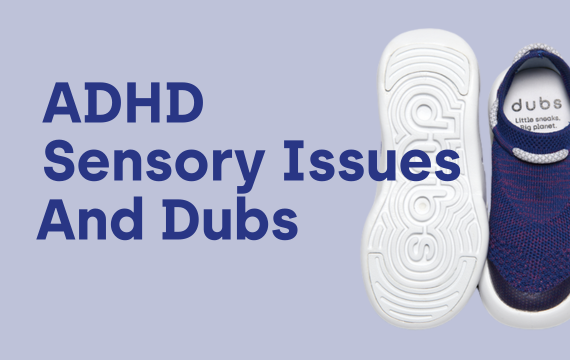When we first set out to design Dubs, our main goal was simple: make the most comfortable and sustainable shoes for little legends and see if we can make life easier for parents.
As a new dad trying to wrestle tiny feet into tiny shoes while running late for nursery, I quickly became allergic to laces. Add to that the fact my sister is disabled and I’ve seen first-hand how hard fiddly fastenings can be I knew from day one, if I’m going to design sneaks for kids, they HAD to be slip-on 🤣
So I made sure Dubs had that easy-on, easy-off magic baked in. Because I’d seen how much independence it gave my sister and how much it saved my mum’s back….
And thank goodness I did. Leila is a beautiful ball of energy, and the quicker she can charge outside, the better for all of us 🤣
But what we didn’t expect… was what happened next.
We started getting messages from parents. Lovely, thoughtful messages and stories of kids who have ADHD, autism, and sensory processing challenges who usually couldn’t bear to wear shoes, who suddenly wouldn’t take their Dubs off.
One mum told us her daughter, who’s autistic, hadn’t been able to do PE because she couldn’t stand the feeling of shoes on her feet. Then she tried a pair of Dubs and not only wore them… she wanted to sleep in them!
We were floored.
We hadn’t set out to design for sensory needs. But something about the way we’d made Dubs, soft, flexible, light, no rough seams or hard sole; things we’d done for comfort and practicality was clearly working for kids who find regular shoes overwhelming.
It made us realise just how much of the kids' footwear world is designed without thinking about how shoes actually feel. And for children (and parents) with sensory sensitivities, that matters. A lot.
It made us stop and look properly at the numbers.
Studies show that between 5% and 16% of children (!) experience sensory processing challenges. That’s not a niche. That’s a huge number of kids affected by how clothes and shoes feel. The sounds they make. The seams they rub. The tightness or texture. It’s not one single issue, defining sensory needs is a minefield. One child might hate the feel of socks, another might only wear loose clothes, another might refuse shoes entirely because of how they sound on a floor.
And while some of us might find that stuff mildly irritating, for others it’s overwhelming. These sensitivities can lead to meltdowns, distress, or even refusal to join in at school or PE. Yet most brands still don’t account for any of this in how they design.
We’re not claiming to have it all figured out. But this feedback changed how we think. It’s made us double down on designing for how shoes feel, not just how they look or perform. We’re now exploring how to build sensory-friendly thinking into all future collections, from materials to fit to how kids interact with their shoes day-to-day.
It’s early days but if Dubs can help even one more child feel comfortable, included, and ready to explore the world on their terms, then that would be amazing 🔥
What a fulfilling challenge to have!
Stuart
Co-Founder & CEO
PS...this is not my area of expertise (yet), so here is a little shout out - If you work with kids who have sensory challenges, or know someone I should speak to, I’d really love to learn more.
Please get in touch – stuart@dubsuniverse.com
PPS.. Have a about how our AI fit tool helps reduce sizing stress
